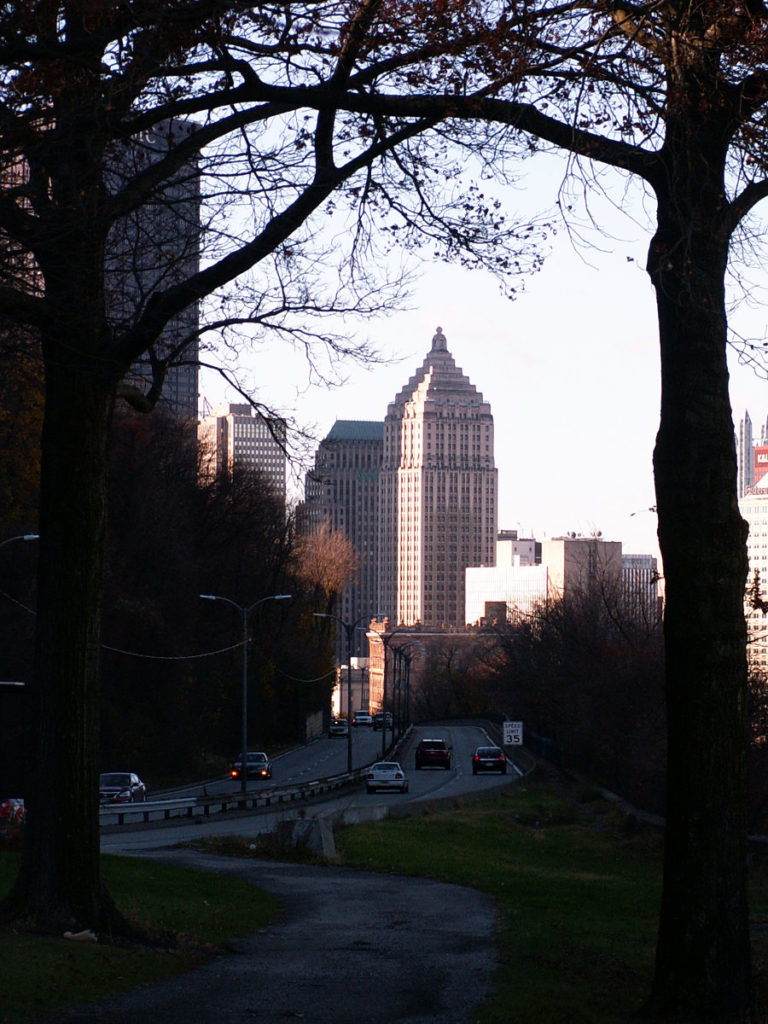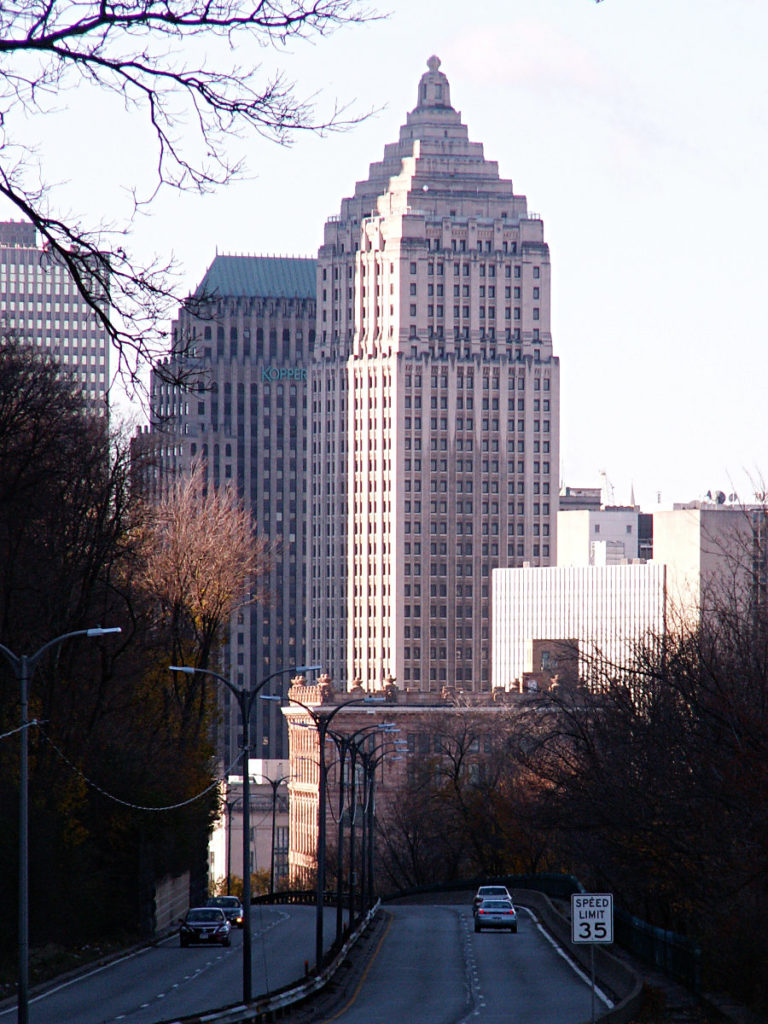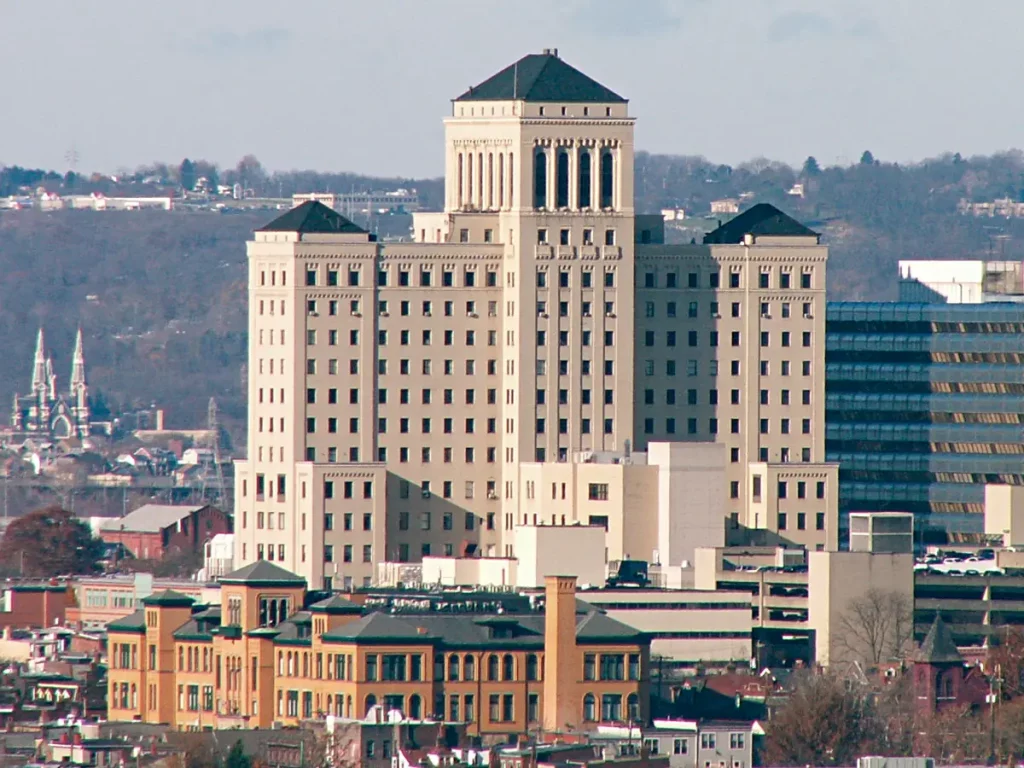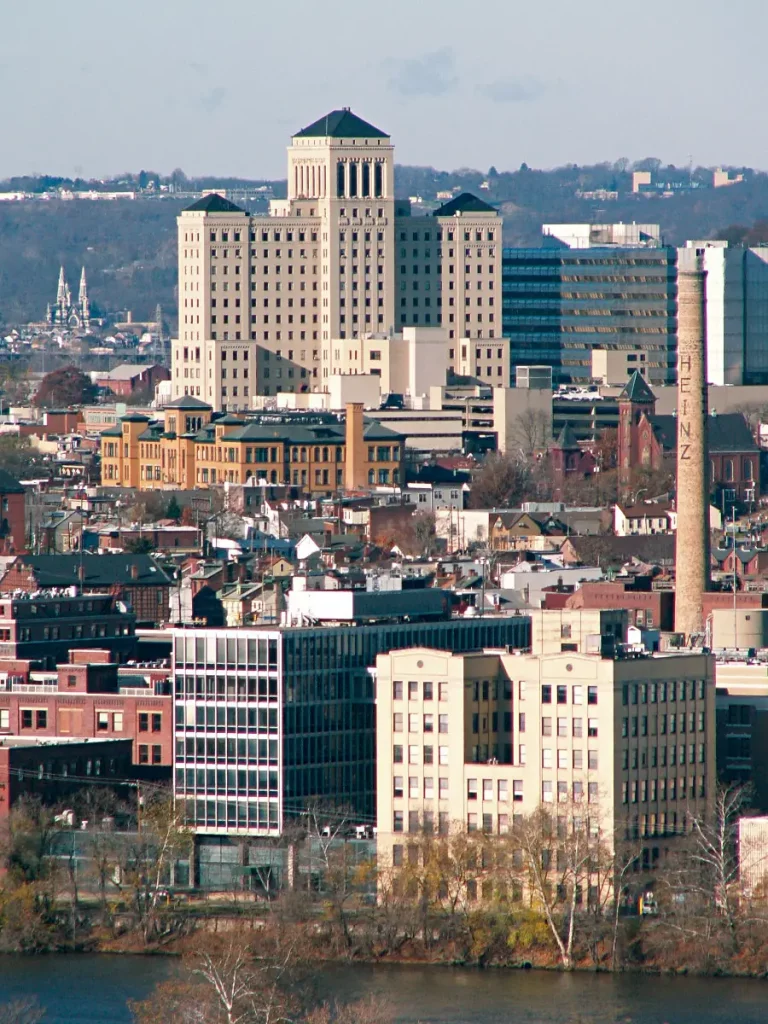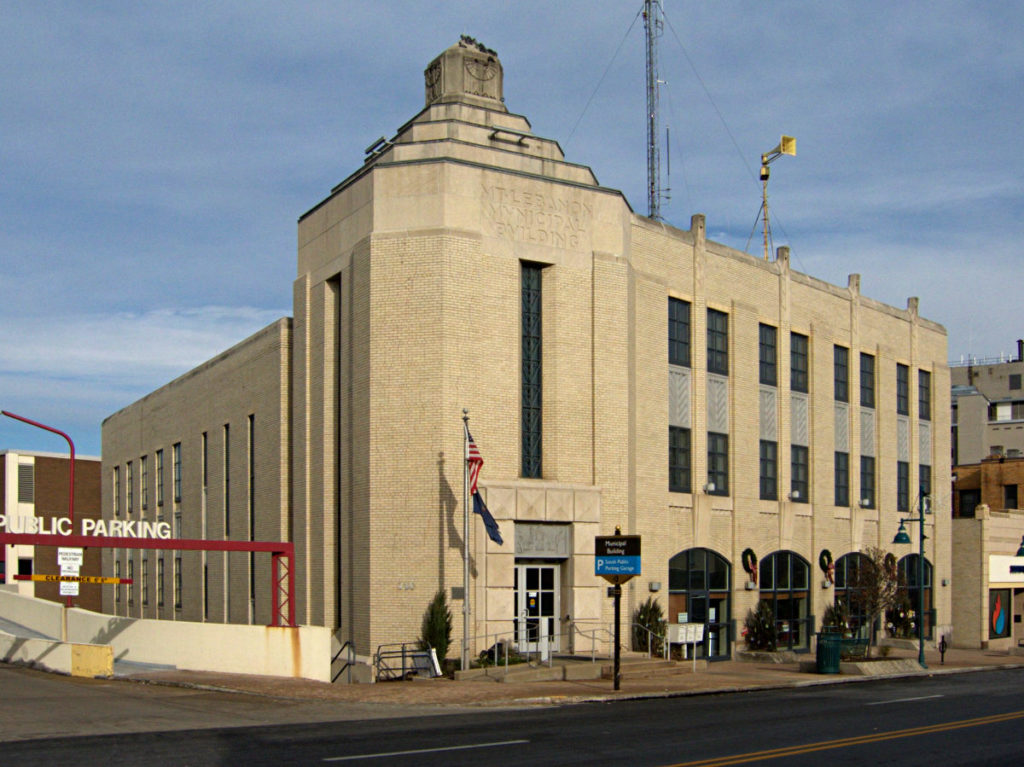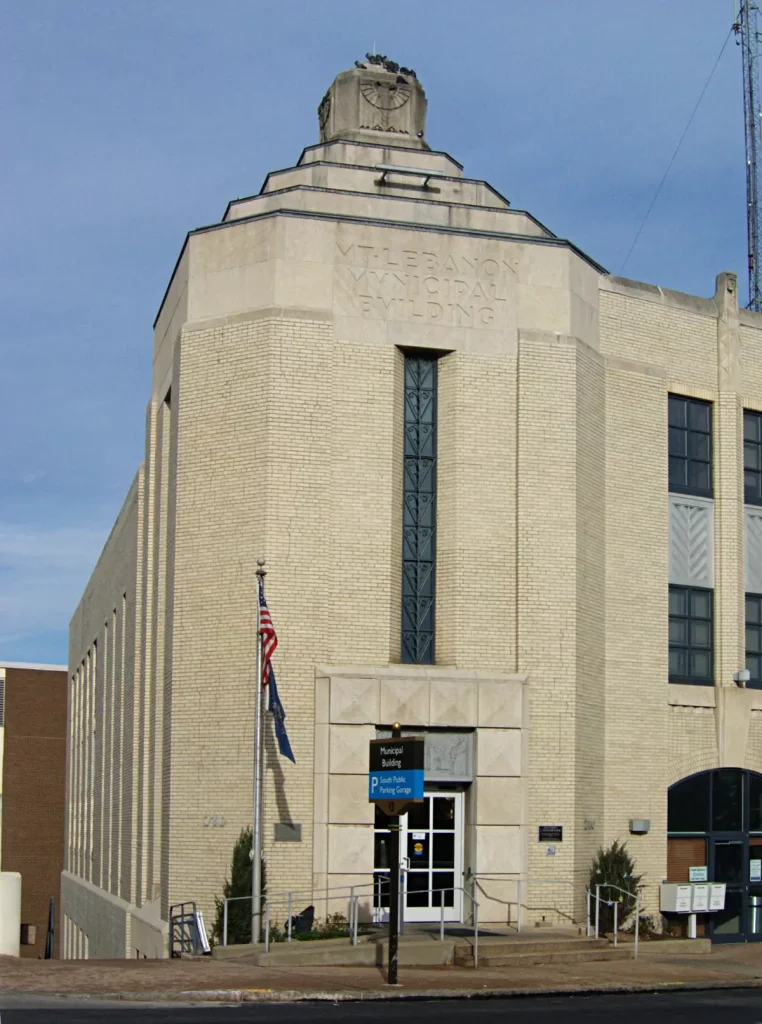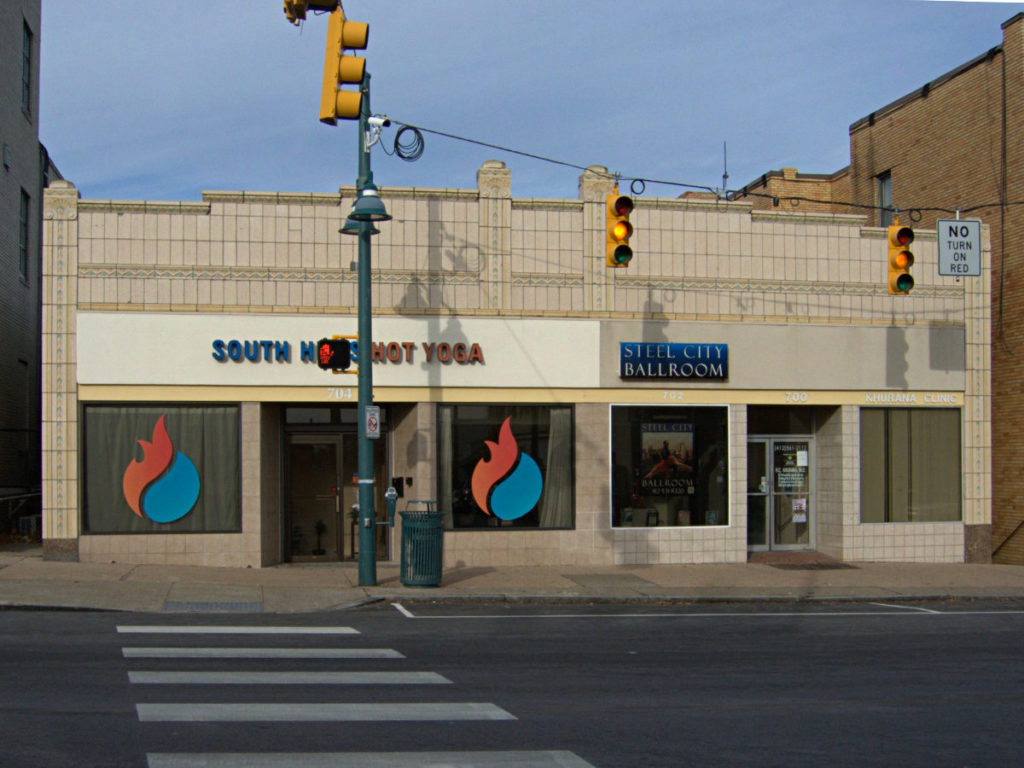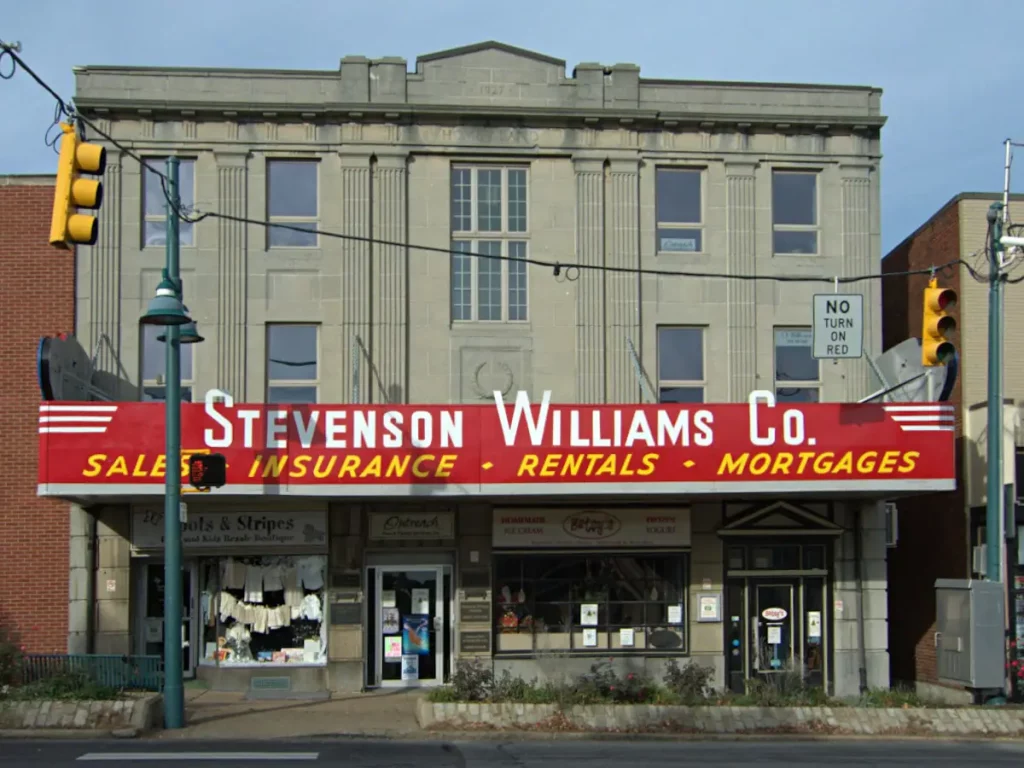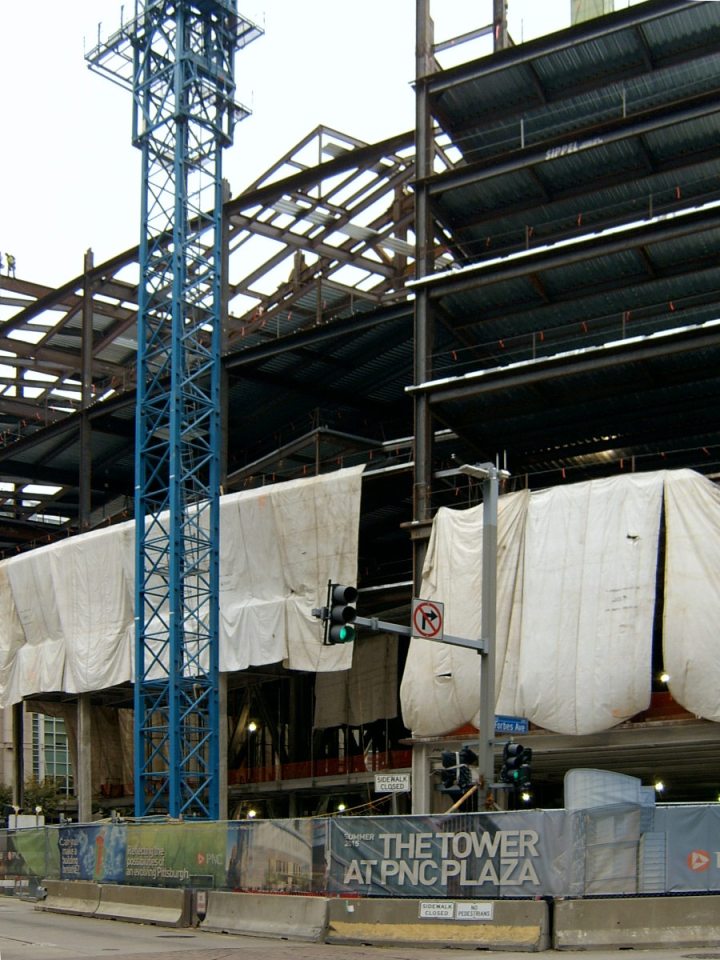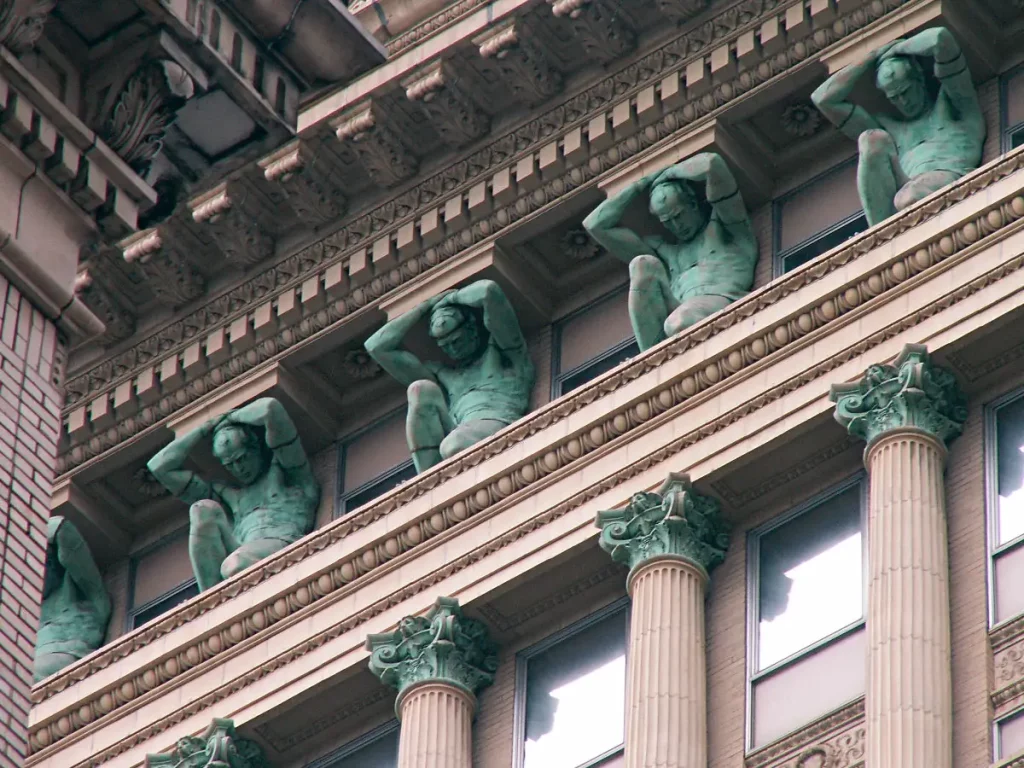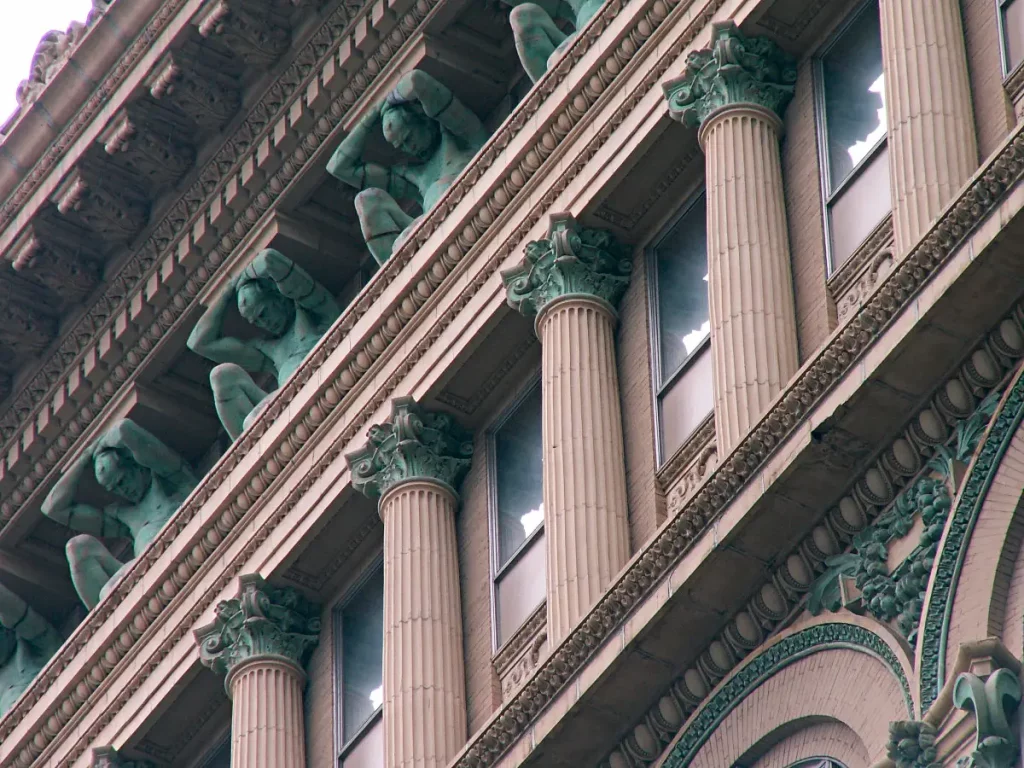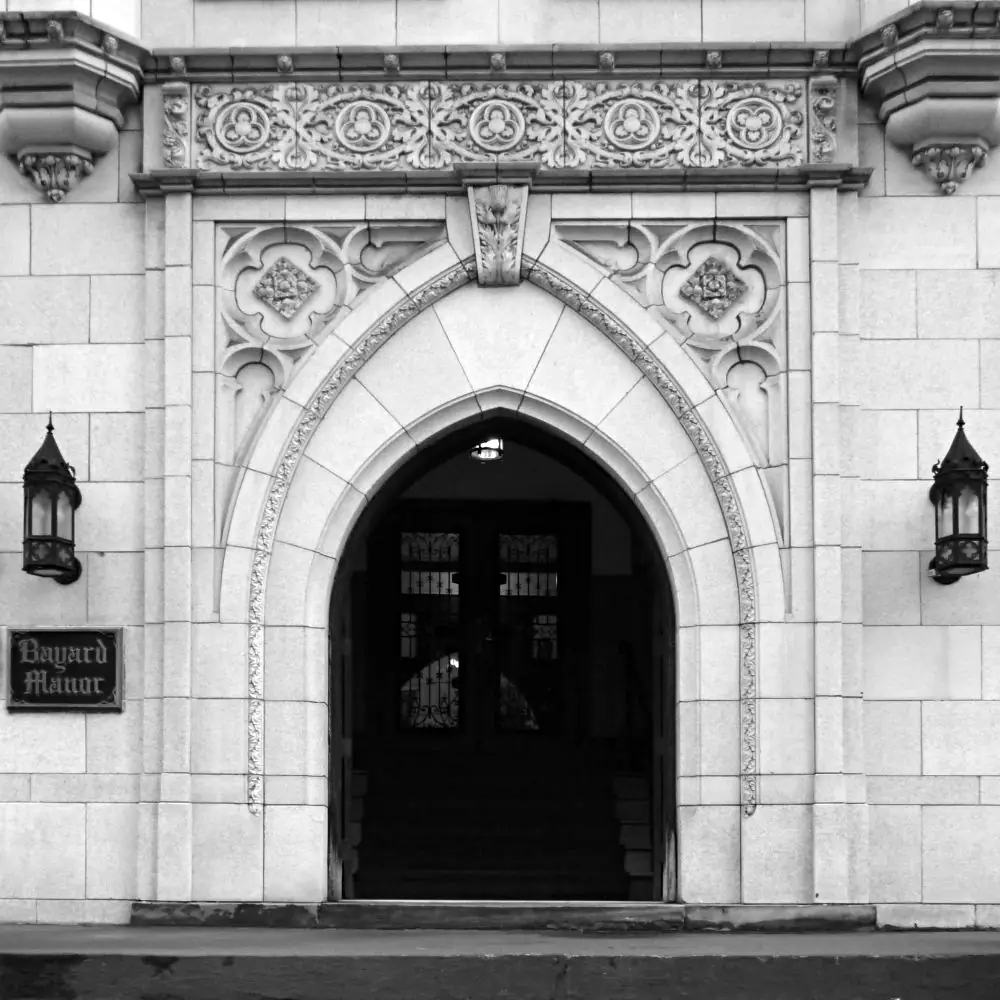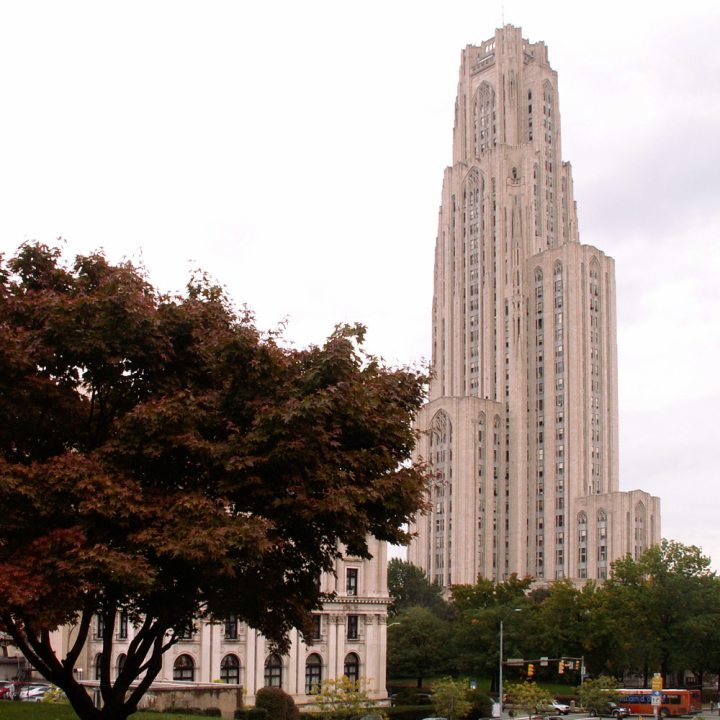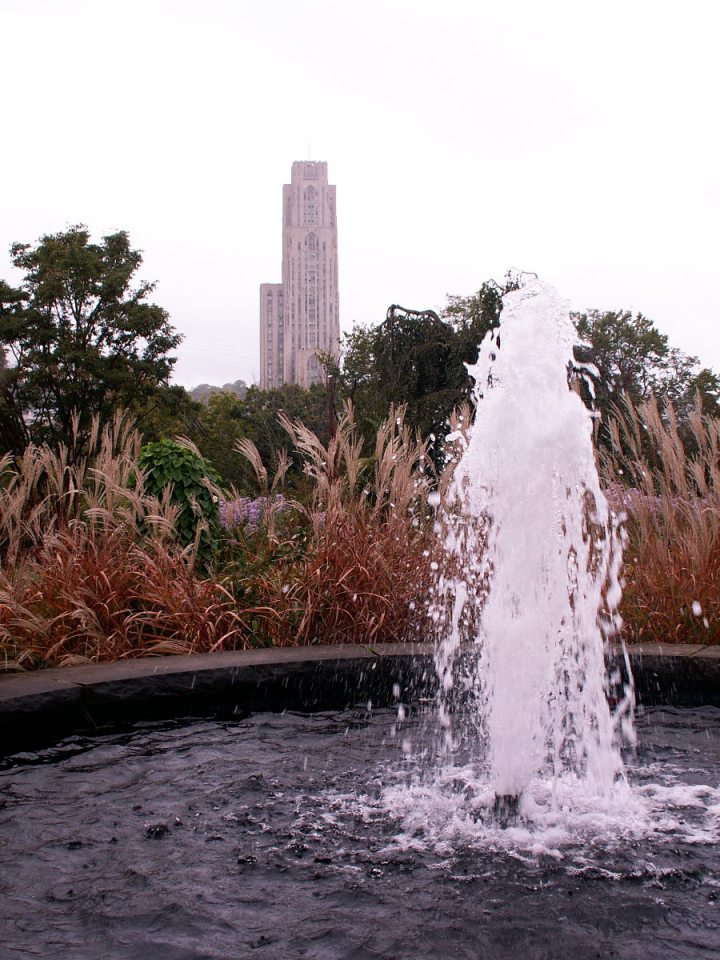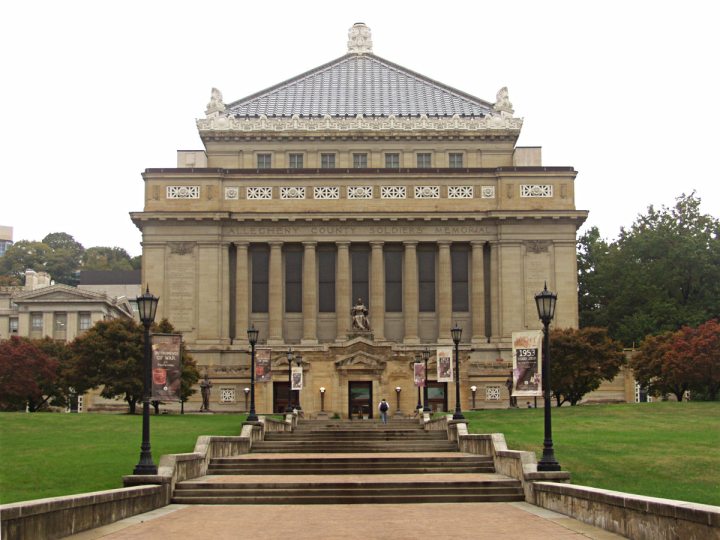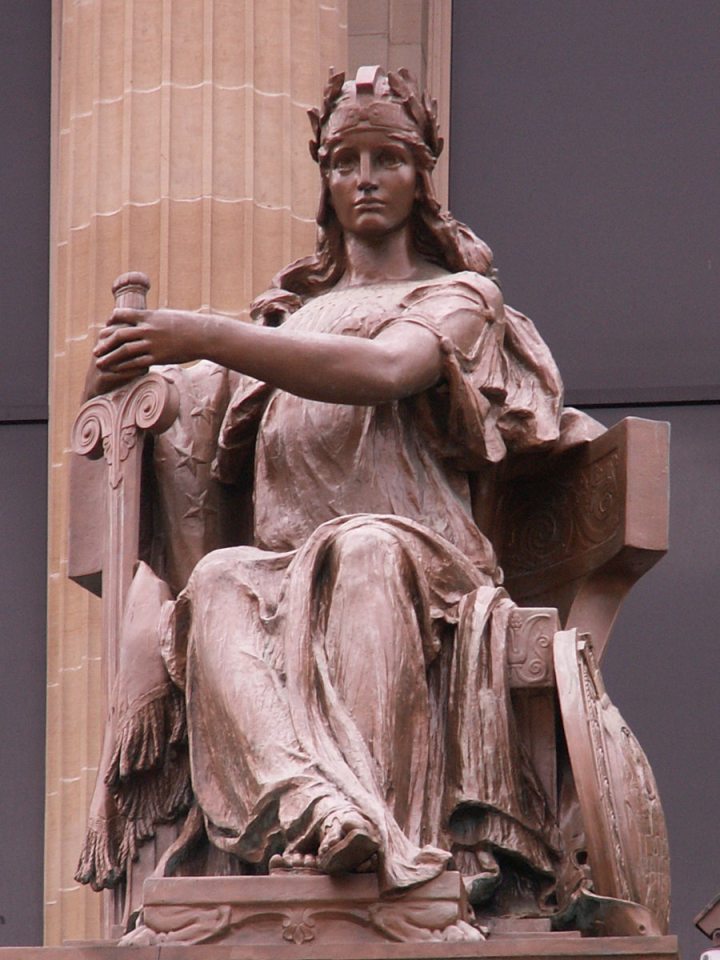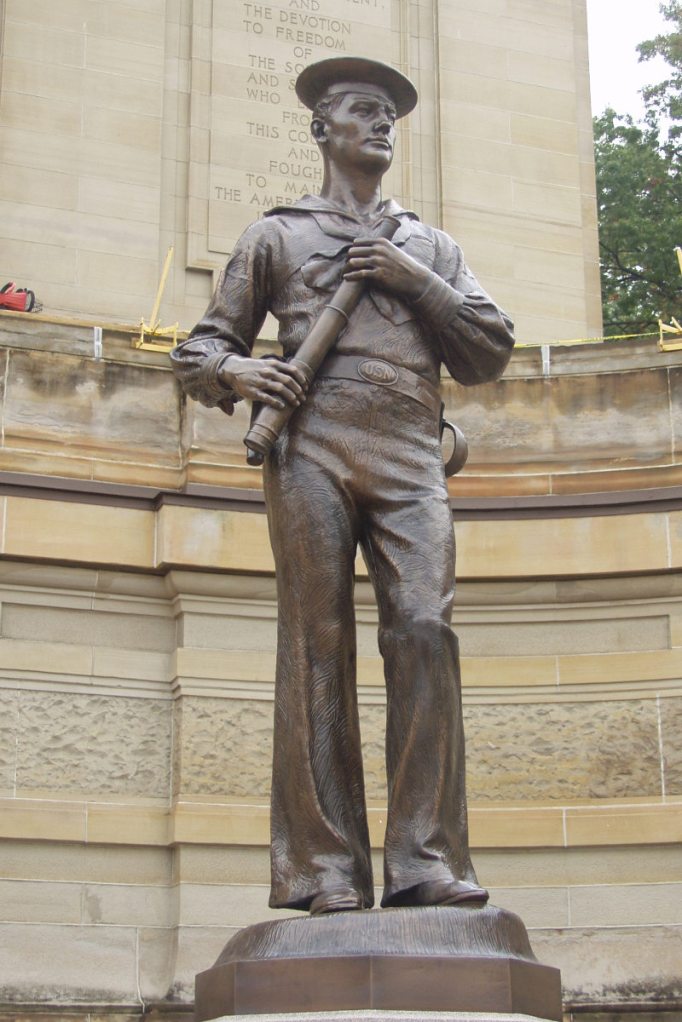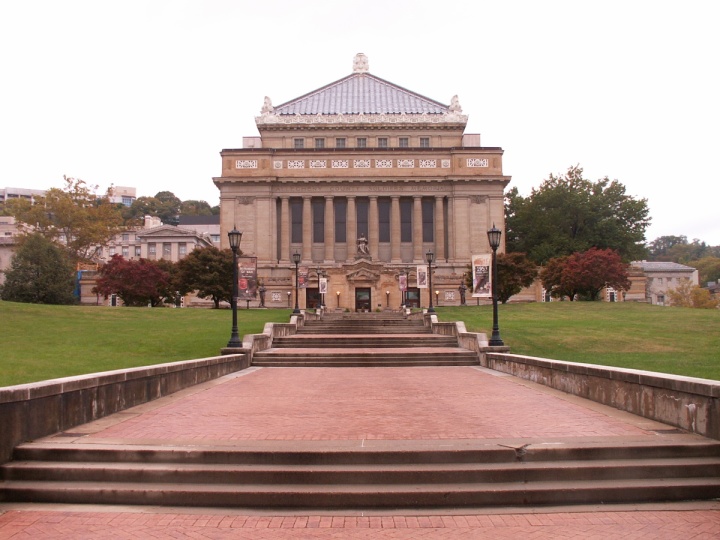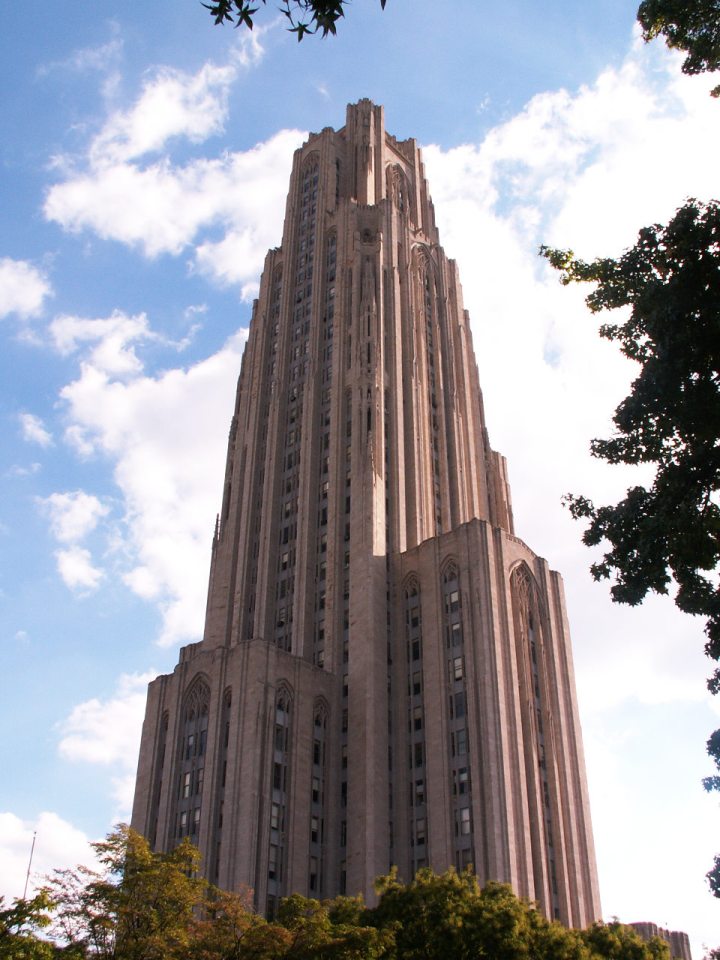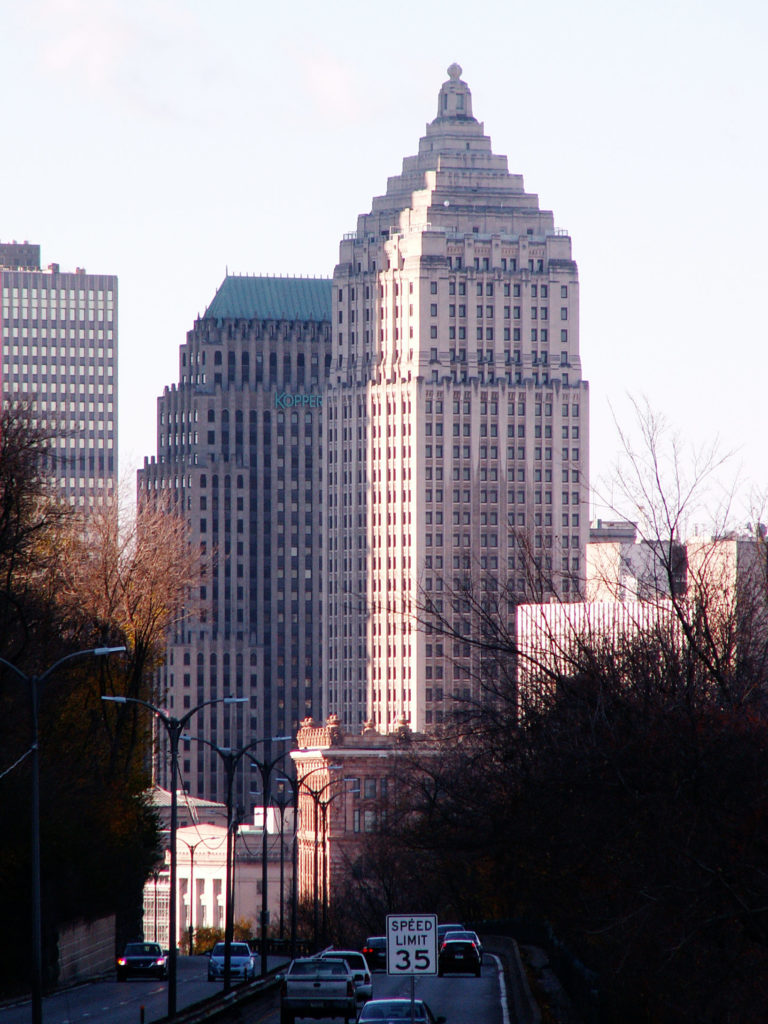
Two grand Art Deco skyscrapers face each other across Seventh Avenue: the Gulf Tower (1932) and the Koppers Tower (1929).
The Gulf Tower (in front in these pictures) is a good example of the style Father Pitt calls “Mausoleum-on-a-Stick”: the top is modeled after the Mausoleum at Halicarnassus. This was Pittsburgh’s tallest building for decades, until it was surpassed by the U. S. Steel Tower; after the building boom of the 1980s, it now stands at number 6. The architects, Trowbridge & Livingston, were the originators of the Mausoleum-on-a-Stick style: twenty years earlier, they had created it with the Bankers Trust Company Building in New York, which looks very much like a primitive, pre-Deco version of the Gulf Tower.
The Koppers Tower was designed by the prolific firm of Graham, Anderson, Probst & White, whose buildings litter the skyline in Chicago, and who also designed the Terminal Tower in Cleveland. This is the most splendid Art Deco building in Pittsburgh, and it was very briefly the city’s tallest building, until the Grant Building surpassed it a few months later.
